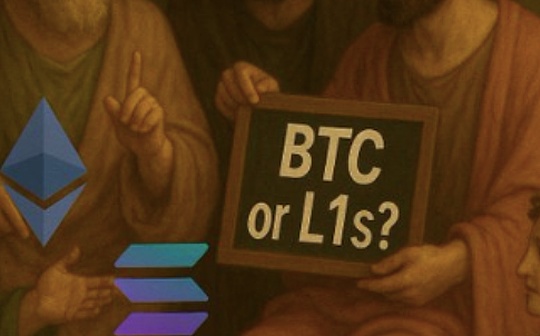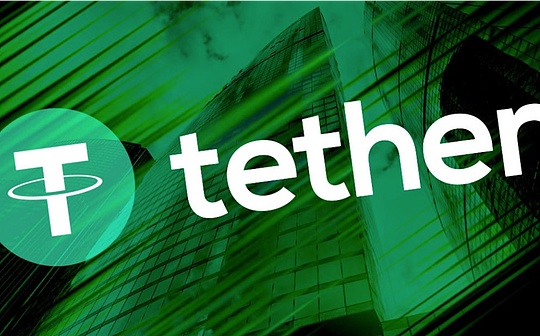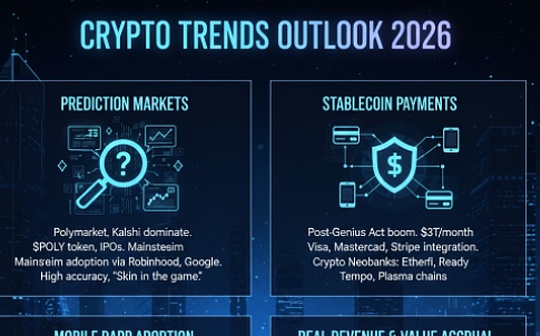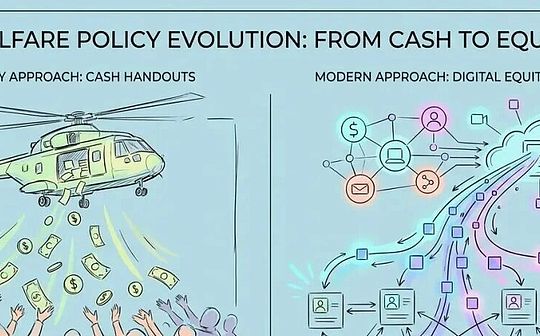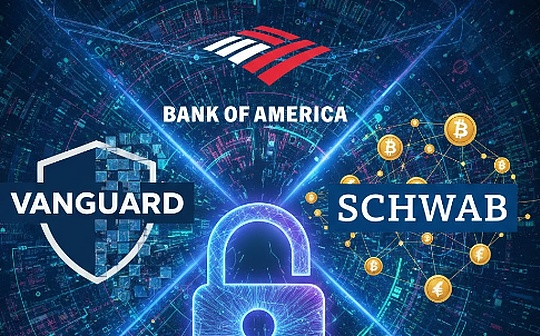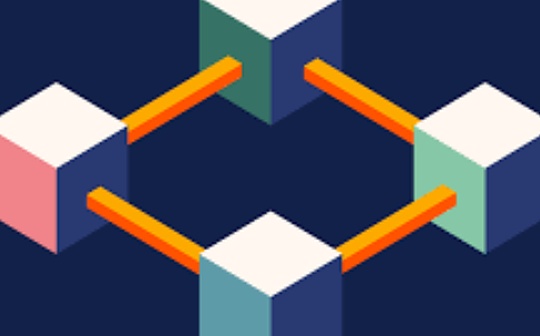
Author: Carlos Maximiliano Cano, Ethan Francis, Particle Network; Translation: 0xjs@作 作 作 作 作 作 作 作 作 作 作
introduction
In 2024, the abstract vertical field of chain is exponentially growing, and the team in the entire industry is working towards a common goal: simplifying the experience of web3 users in multi -chain and fragmented ecosystems.
The fragmentation of the blockchain is deeply rooted at the technical, economic and cultural level.Therefore, chain abstraction cannot be implemented through a single general solution.Even in the early stages of this technology, this has become obvious. There are many standards, methods, and understanding of chain abstraction. All of them solve different friction parts of cross -chain.
This article will expand our existing chain abstraction methods.Then, introduce the concepts of user experience at different levels to explain how to achieve chain abstraction more comprehensively from the perspective of the user.We will also study the advantages and disadvantages of each different level, and study how to use their combinations to create the complete implementation of chain abstraction -fully eliminating the cognitive burden of users using different chains.
Review: Different methods of chain abstraction
In the previous exploration of the abstract stack of the chain, we divided all solutions designed to solve Web3 fragmentation into three ways:
-
Comprehensive method:Infrastructure involves solving multiple chain abstraction challenges.These challenges can be cross -chain communication, GAS abstraction, unified liquidity.The comprehensive method is led by projects such as Near, Particle Network and Polygon.The project that adopts this method aims to be “complete implementation of chain abstraction” in the introduction.
-
ORChestration:It is the second method that enables developers to build applications that coordinate the execution and management of different chains through a single user -level signature.One such application may allow users to use the assets in another chain to perform transactions in this chain and automatically handle all underlying bridge transactions.Agoric, SKIP, and sockets are some innovative projects in this category.Projects that adopt this method usually aim to create chain abstract application -level implementation.
-
singlequestionChain abstraction solution:It is the third and the last method, focusing on solving a single fine particle -size problem related to chain abstraction.These solutions provide primitives that are essential to build cross -chain infrastructure, and can even be used as a underlying component of the above two methods.One of these problems explored by protocols such as Layerzero and Hyperlane is cross -chain message transmission, which allows arrangement and comprehensive solutions to run across the blockchain.

Different chain abstraction methods
Next, we will explore different ways to achieve their goals with the ORCHESTRATION solution, as well as different levels of their (from the perspective of the user).We will also explore the relationship between different levels, how to operate at different levels and find the synergy effect.To this end, we use the above integrated depth spectrum as a blueprint to segmented and organize different user chain abstraction levels, which is affected by another popular framework that understands the abstraction of the chain: Cake.
Let us quickly review the CAKE framework because it will provide useful context to introduce multi -layer models.
Cake framework: layer the chain drawing
The CAKE framework developed by Frontier Research proposes a systematic method of organizational and unified chain abstraction solutions.It includes three main layers: permission layer, solution device (solver) layer and settlement layer.
The application layer contains different applications built on chain pumping stacks.The license layer refers to the technology of accounts and execution layers, such as account abstraction, intent and key management solutions.Then, the solution layer can promote the deconstruction of intention, the execution of cross -chain logic, and other related functions.Finally, the settlement layer includes DA layers, net bridges, prophecy machines and other underlying technologies.Each layer in this frame helps chain abstraction, which allows collective to present a complete implementation.

CAKE framework for chain abstraction
Combining the CAKE framework with the different methods of implementing chain abstraction, we can create a psychological framework to classify the user experience and its interrelationships of different solutions.
Different levels of chain abstraction
There are three different types of user processes in chain abstraction solutions:
1. Blockchain -level abstraction.Mid -distance developers and end users in the stack are the farthest.This level usually involves a network or chain collection of sharing, cross -chain messages/bridges, and other attributes, which enables them to easily migrate or sharing the state between the blockchain in some cases.Examples include Polygon’s Agglayer and a COSMOS ecosystem that supports IBC to some extent.
2. Account -level chain abstraction.The chain abstraction applied to the account level provides a universal, low -improvement unified state (account settings, balance, etc.) mechanism for cross -chain user accounts.The account -level chain abstraction is specifically targeted at end users and inspired by account abstraction.
3. Application -level chain abstraction.Purely through account or blockchain -level abstraction (sometimes two) to achieve the problem of cross -chain sharing account status cannot solve the problem of application developers.This level of chain abstraction provides flexibility for developers, and can directly achieve seamless cross -chain transactions and intention execution through the single signature of its DAPP.
 Now let’s study the different levels and meanings covered by the above.
Now let’s study the different levels and meanings covered by the above.
Blockchain -level chain abstraction (comprehensive)
The abstraction of the blockchain -level chain is realized as the basis for the chain itself.Therefore, from the perspective of technology and users, it is the most comprehensive level.
This type of chain drawing involves the aggregation of the blockchain of the blockchain (e.g. Polygon’s Agglayer or the COSMOS blockchain supports IBC).The implementation of this method has greatly promoted the higher part of the stack, such as chain abstraction based on accounts, because it provides security guarantee and efficient cross -chain news, which cannot reach the same on the separation blockchain to reach the same ones.degree.This makes this method very suitable for chains in the same ecosystem, so that they can have a unified bridge solution and security guarantee.Polygon’s Agglayer is an example of the abstraction of the blockchain chain. It aggregates a set of ZK proves and submitted to Ethereum for settlement.
However, one of the main challenges of chain abstraction is the lack of unified communication and bridge standards between chains under different ecosystems, which is usually due to differences in architecture, economic and security.Although other ecology may be backward, the IBC and other protocols of the COSMOS ecosystem have implemented this unified communication.The blockchain -level chain drawing aims to unify the ecosystem and solve the lack of such peer nature. Although due to the above reasons, it is unlikely to be adopted by several major ecosystems (such as Solana and Ethereum) under the same solution.
The abstraction of the blockchain chain is not a necessary condition for achieving the ideal of chain abstraction. Although it is as high as above, it is very helpful for the user experience, especially when combining with the account -level chain abstraction.The figure below shows the interaction of various chains in the blockchain -level chain abstraction.

Blockchain -level chain abstraction design
Account -level chain abstraction (comprehensive)
Although the abstraction of the blockchain -level chain solves the lack of peer infrastructure between blockchain and lays the foundation for the complete chain abstraction, the account -level solution solves the problem of user -level fragments.
These solutions directly provide users with a universal cross -chain seamless interaction mechanism, providing various methods to realize the status of shared accounts and transfer assets in the entire ecosystem.Many implementation of account -level chain abstraction, such as the general account of Particle Network, aimed at creating an experience. Among them, the underlying blockchain of a given application becomes the details of infrastructure that has nothing to do with users, because their balance and address are all in all the balances and addresses in all in all the amounts and addresses are all in all the balances and addresses in all in all the balances and addresses are all in all the balances and addresses.The user remains unchanged.
Applications must choose a chain abstraction based on account, but they usually rarely have no programming improvement.These solutions often process cross -chain movement and coordination separately, which only affects end users who interact with given applications without affecting the application itself.
Account -based chain abstraction and blockchain -based chain abstraction can be regarded as an important part of the “comprehensive” solution that solves chain abstraction. It can play a role alone or cooperate with each other.However, as mentioned earlier, the complete implementation of chain abstraction can approximate the combination of comprehensive solutions and intermediate solutions.This is the place where the application -level chain is abstract.
Application -level chain abstraction
Finally, there is an application -grade method that is closest to developers -the application chain abstraction.Even if there are two other chain abstraction, each application needs one method to make useful use of this abstraction to give full play to its potential.Orchestration solves this gap by enabling developers to build seamless (and usually without users) that spans multiple chains and ecosystems.In fact, this aims to perform asynchronous and long -term business logic across various chain execution to maximize the combination of components on the chain.Projects such as Agoric, SKIP, and Socket focuses on application chain abstraction.
An example of application -level chain abstraction tool is Agoric’s Orchestration API, which provides developers with contracts and APIs to execute cross -chain transaction flows through a single signature of end users.This allows complex cross -chain work processes and operations without increasing any complexity. The process of interacting with different blockchain will be abstracted into a set of simplified calls to simplify the experience of developers.
The abstraction of the application chain can also be implemented with the abstraction of the account -level chain, so that developers can simplify the advantages of these solutions to create a complete implementation of chain abstraction.
 The design of the application chain abstract solution
The design of the application chain abstract solution
Relations between different levels
The complete implementation of chain abstraction requires a multi -level solution to work together to completely eliminate the friction between multi -chain.This will inevitably lead to a modular relationship between the layers.
Through account -level and application -level abstract collaboration, these relationships can be further understood.Using the solution described above as an example, we can see how developers use the PARTICLE Network and Agoric solutions at the same time to maximize the ability to increase users from these two tools.
The figure below shows how these solutions work together to achieve the complete implementation of chain abstraction:
 Multi -layer chain abstraction method, including application -level and account -level chain abstraction
Multi -layer chain abstraction method, including application -level and account -level chain abstraction
It should be pointed out that in this setting, the abstraction of the blockchain chain has become an optional but crucial solution, which needs to be implemented as much as possible.The existence of the blockchain -level chain abstraction is to reduce account and application -level friction. The friction that they cannot directly solve can be solved by unified blockchain.Exchanges of operating an ecosystem.
Real examples of hierarchical chain abstraction: Agoric + Particle Network
As mentioned above, the account -level chain abstraction and application -level solutions can be closely cooperated, and the user interaction and transaction across multiple blockchain across multiple blockchain can enhance the overall web3 experience.
Let’s study how to use the general account of the Particle Network and Agoric API to build a solution and its potential cases.This will combine the following factors:
-
PARTICLE Network’s general account, acting as the main interface and interaction point for end users.Users only need to connect to the existing wallets to create and access these accounts, which enables them to use the balance of any chain to execute transactions.Using a general account, the underlying chain of the application has nothing to do with the user’s interaction.
-
Agoric’s Orchestration API provides simple API calls to manage chain instructions, so that developers can easily program seamless multi -chain trading sequences at the application level.This includes determining which contracts are interacting with, what messages to send, and any intermediate steps required for the operation.
By using application -level and account -level solutions at the same time, users can focus on their goals, not the technical details of the blockchain operation, and developers can focus on building a specific process for users, rather than dealing with cross -chain interactionThe subtle difference.
This composite solution can be used for multiple use cases, including:
Multi -chain asset manager
Multipartment asset managers can simplify the way users interact with their assets on multiple blockchains, similar to the use of centralized platforms such as exchanges.The correct combination of account abstraction and application chain abstraction based on the account can completely reconstruct the seamless experience on the chain.From the perspective of users, they can perform complex multi -chain transaction processes and exchange, and interact with the smart contracts hosted by any blockchain without understanding the underlying multi -chain interaction; on the contrary, they will see a simpleThe interface similar to the web2 is used to perform a multi -faceted chain operation.
Log in to use IBC
Single login and authentication models tailored for the inter -blockchain communication protocol (IBC) ecosystem, covering the application chain and chain service.Inspired by the Ethereum Improvement Proposal 4361 and the unreasonable improvement of improvement proposals. This solution will simplify the login process of the application or protocol of the IBC connection.Decentralization.
This will allow users to use its universal login account and access multiple applications in the IBC ecosystem without the need to re -verify because the application chain abstraction is required.Expanding the concept can realize the logic of session management. Even when the applications on the blockchain that supports IBC can also be used, users can also maintain the login status.
DEFI polymer
You can also build a polymer with the smallest operation complexity, which can focus on maximizing income rather than complex logistical execution.This method will enhance the user experience by providing a single -point control for different assets and DEFI strategies, and eliminates technical obstacles to block the use of DEFI.In order to make full use of the two -level chain abstraction, the product can also built into a complex trading strategy that spans multiple chains.
For example, through the DEFI polymer, users can initiate exchanges on the given chain and deploy the received assets to the pool on another chain.As an example below shows this (although in different contexts):

Liquid cross -chain flow, recently proposed by Agoric
Multi -chain governance platform
The multi -chain governance platform can provide a safe and transparent system for voting and pledged token across multiple blockchains.It will ensure a strong chain authentication to verify the user identity and make it easier for participating in and under the chain to vote.Seamless asset management and identity management of the PARTICLE general account, combine with Agoric’s Orchestration API, efficient cross -chain operations. Developers can design a friendly interface to easily manage participation, display voting, view proposals or track the governance tokens.Betal and other functions.
The complete implementation of chain abstraction
As described in this article, chain abstraction is a goal that requires multiple methods or even different levels of different levels in the same method.The examples of the classification models and display through the combination PARTICLE and Agoric’s orchestration API and other tools of applications all illustrate the practical benefit of chain abstraction.
The most important thing to explore the above is to emphasize the evolution of Web3 to create a more unified and user -friendly environment, and the diversity of strategies that can be used to improve cross -chain user experience.Each abstract layer not only serves its unique features, but also complements other layers, thereby forming a comprehensive ecosystem. In this ecosystem, users’ interaction is simplified, and the underlying complexity of the blockchain interoperability isAbstract.
It is hoped that this article can help you better understand the chain abstraction, and its panorama, classification, level and complete implementation.

